Shropshire's crumbling history is revealed in survey
Shropshire's ancient monuments and buildings are crumbling into the past, according to the latest figures supplied by Historic England.
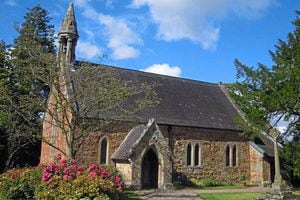
The figures released today give an annual snapshot of the health of the historic environment.
In Shropshire there are about 100 ancient monuments, listed buildings, conservation areas and places of worship on the Buildings at Risk register.
And while some have remained on the register – and in several cases have been on it for many years – there are 13 new additions and six have been removed.
At the 18th century Bedlam blast furnaces at Ironbridge, an important survivor from the Industrial Revolution, Historic England is funding a canopy to cover and conserve the ruins.
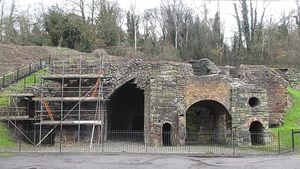
Elsewhere in the county, the Nag's Head engine house in the village of Pontesford is being repaired thanks to a Historic England grant and partnership work with Shropshire Council.
But a new one on to the register this year is the engine house of Muxton Bridge Colliery. Established around 1830, the colliery was a relatively early deep coal mine and the pumping engine was added in the 1870s. Plant growth is undermining some of the brickwork and causing structural problems.
Rhodri Evans, Heritage at Risk principal for Historic England in the West Midlands, said: "Historic England continues to invest grant aid and to dedicate time and expertise working with owners, developers and communities to find solutions to rescue precious sites."
Among those removed is the Church of St Catherine at Tugford which has received grant aid for renovation work.
The Roman villa at Harley, near Much Wenlock, has likewise been removed from the register as has the ringwork and bailey castle southwest of Lyndale at Westbury which received a grant from Historic England. Those added to the register for the first time are The Church of St Mary the Virgin in Shawbury, the Church of St Mary in Stottesdon and The Church of St Mary in Bitterley.
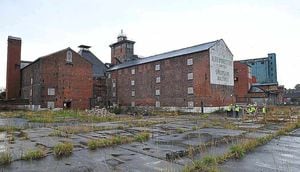
Another new addition to the register are two parts of Ditherington Flax Mill. Despite securing millions of pounds' worth of funding, the Cross Building and the Flax Warehouse have been placed on the register for the first time.
Further afield is the striking Italianate style domed Oratory Church in Birmingham, where the author J.R.R. Tolkien worshipped as a child and the hillfort at Bury Bank, Stone Rural, Staffordshire. The hillfort dates to the Iron Age and was probably a high status settlement, built to display power and wealth as well as for defence. Bracken has overrun the site.
Removed from the list is Pennocrucium Roman Camp, Staffordshire which was spotted from the air in 1946. Excavations showed it was occupied from the mid-1st century until the 4th century AD.
Properties in Shropshire new to the register are:
Church of St Mary the Virgin, Shawbury: The church has origins in the 12th century. The tower roof is leaking and requires repair.
Church of St Giles, Farlow: Built in 1857. The roof is failing and ceiling panels are unstable.
Church of St Mary, Highley: Parts of the church date to the Norman conquest but roofing and masonry are now failing despite a restoration project in the later 19th century.
Church of St Mary, Stottesdon: The church as seen today dates to the 14th century. Roofing and masonry work need replacing and repair.
Church of St George, Clun: The 12th century church sustained damage in the civil war and was virtually rebuilt in 1877. Storm damage has led to an emergency situation to repair the roof.
Church of St Margaret, Acton Scott: A medieval church which contains a 19th century chapel built for the Stackhouse family of Acton Scott Hall. The hipped slate roof is in poor repair.
Church of St Mary, Cleeton St Mary, Bitterley: Built in 1876-78 the church has undergone recent repairs which have shown that the original roof coverings are failing.
Church of St Peter, Coreley: This church has a 13th century tower but is riddled with damp caused by a failing roof and guttering.
Parish Church, Wheathill: The church was built in 1622 and the nave and lower chancel were rebuilt in the 18th century. It was subsequently restored in 1904 and this was possibly the last occasion when all roofs were last relaid and accounts for their poor condition.
Ditherington Flax Mill: Cross Building, Shrewsbury: Outline planning approval was secured for the whole site in 2010, and this will form the basis of the masterplan and future redevelopment proposals. The Friends group is flourishing.
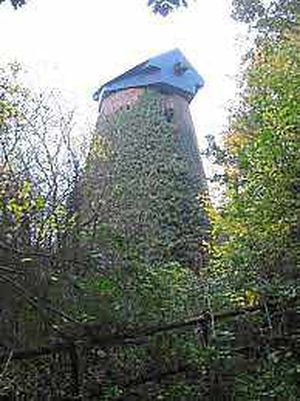
Ditherington Flax Mill: Flax Warehouse, Shrewsbury: Outline planning approval was secured for the whole site in 2010, and this will form the basis of the masterplan and future redevelopment proposals. The Friends group is flourishing.
Church of St Nicholas, Bridgnorth: Built in 1858 to replace a medieval chapel it has exposed tile battens to the north aisle roof which suggest that the roof covering is failing. A Listed Places of Worship Roof Repair grant to address these urgent repairs was awarded in June 2016.
Standing Cross in the churchyard of St Michael and All Angels Church, Alberbury with Cardeston.
Those in Shropshire removed from the list are:
Church of St John the Baptist at Kenley.
Pell Wall Hall, Newport Road, Sutton upon Tern.
Church of St Catherine, Tugford.
Heath Chapel, Stoke St Milborough, Heath.
Roman villa northeast of Cottage Coppice, Harley/Much Wenlock.
Ringwork and bailey castle 350m south west of Lyndale, Westbury.
The Buildings at Risk Register 2016 Shropshire
Clee View Conservation Area, Highley
Llanymynech Conservation Area, Llanymynech and Pant
Church of St John the Baptist, Myndtown
Church of the Holy Trinity, Minsterley
Church of St Michael and All Angels, Smethcott
Abbey Church of the Holy Cross, Abbey Foregate, Shrewsbury
Church of St Lucia, Upton Magna
Church of St Chad, St Chads Terrace, Shrewsbury
Parish Church, Boraston
Church of St John the Baptist, Nash
Church of St Mary, Ashford Carbonel
Heath Chapel, Stoke St Milborough, Heath
Nickless moat, Milson
Offa's Dyke: section 890 metres north west and 320 metres west of Little Selley, Llanfair Waterdine
Ringwork 540 metres north of Lane Farm, Alberbury with Cardeston
Wat's Dyke, 420m long section, 190m west of the junction between Preeshenlle Lane and St Martin's Road, Selattyn and Gobowen
Medieval fishpond reservoir north east of Haughmond Abbey and south west of the hamlet of Haughton, Uffington / Upton Magna
Callow Hill Camp: a small multivallate hillfort, Minsterley
Red Castle: an enclosure castle in Hawkstone Park,
Weston-under-Redcastle
Bowl barrow 450 metres north west of Felton Farm, Bromfield
Two bowl barrows 290 metres north of Upper House Farm, Worthen with Shelve
Upper Barn moat, Wistanstow
Lower Cleeton moat, a moat and fishponds 380 metres south east of Cleeton Court, Bitterley
Castle Tump, a motte castle and causeway, 150 metres west of Teme Bridge, Burford
Snailbeach New Smeltmill, 350 metres north east of Green Acres, Worthen with Shelve
Offa's Dyke: section 90 metres south of Brynorgan, Llanfair Waterdine
Roman camps south west of Stoneyford Cottages, Shifnal
Hawcocks Mount ringwork castle 200 metres north east of Hawcocks Farm, Westbury
Uxacona Roman site, Shifnal / St. Georges and Priorslee / Lilleshall and Donnington
Motte castle 80 metres north east of Home Farm, Church Stretton
Motte and bailey castle 100 metres west of Holy Trinity Church, Lydham
Little Shrawardine motte and bailey castle, Alberbury with Cardeston
Moated site and associated ridge and furrow cultivation remains, 145 metres south of St Mary Magdalene's Church, Hadnall
Motte and bailey castle 150 metres north east of Wilmington, Chirbury with Brompton
Bowl barrow 120 metres south west of Dorrington Cottage, Pipe Gate, Woore
Offa's Dyke: section 400 metres south west of Springhill Farm, Newcastle on Clun / Clun / Llanfair Waterdine
Small enclosed settlement on Fron, 340 metres west of St John's Church, Newcastle on Clun
Norton Camp: a large multivallate hillfort, Culmington / Craven Arms
Roman fort 300 metres east of Drayton Lodge Farm, Shifnal
Offa's Dyke: section 2/3 mile (1170 metres) long, north from southern boundary of Rownal Covert, Chirbury with Brompton
Roman camp north of Bromfield Farm, Bromfield
White Ladies (St Leonard's) Priory, Boscobel
Bowl barrow 390 metres south east of Stanley Cottage, Clunbury
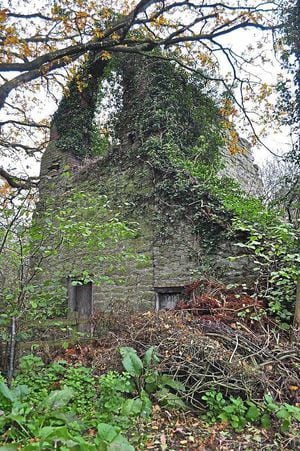
Offa's Dyke: section one mile 750 yards (2290 metres) from Dudston Covert to a point 300 yards (274 metres) north of Lack Brook – Also in Powys: Wales, Chirbury with Brompton
Roman villa 150 yards (140 metres) south east of Lea Hall, Pontesbury
Roman military site at Rhyn Park, St. Martin's
Offa's Dyke: two sections running 400 yards (370 metres) south of Camlad Stream – Also in Powys: Wales, Chirbury with Brompton
Stanwardine moated site and associated fishpond, Baschurch
Offa's Dyke: section 175 metres east of Cefn Bronydd, Newcastle on Clun
Roman villa at Linley Hall, More
Robury Ring: a small enclosed settlement on Wentnor Prolley Moor, Wentnor
Camp Ring motte and bailey castle, enclosure, fishpond and ridge and furrow 400 metres east of Culmington Farm, Stanton Lacy
The Mount motte and bailey castle, 120 metres north east of Hill House Farm, Diddlebury
Bowl barrow at The Napp, Worthen with Shelve
Barn to west of Hall Farmhouse, Aston Eyre
Hawkstone Windmill, Hawkstone Park, Weston-under-Redcastle
The Old Rectory, Claypit Street, Whitchurch Urban
Brogyntyn Hall, Brogyntyn Park, Selattyn and Gobowen
Alberbury Castle, Alberbury, Alberbury with Cardeston
Former Ditherington Flax Mill and attached former malt kiln, flax dressing building and flax warehouse, Spring Gardens, Ditherington, Shrewsbury
Rockley Farmhouse, Chirbury with Brompton
Pitchford Hall, Pitchford
Wattlesborough Castle (uninhabited parts), Alberbury with Cardeston
Remains of Lea Castle at Lower Lea Farm, Lea, Lydham
Ludlow town walls, Ludlow
Hargreaves Farmhouse, Winnington, Wollaston
Cheney Longville Castle, Cheney Longville, Wistanstow
Red Castle, Hawkstone Park, Weston-under-Redcastle
Charlcotte Furnace, Neenton
48 Mill Street, Bridgnorth
Old Hall and attached garden wall, Old Marton, Ellesmere Rural
Apprentice House of former Ditherington Flax Mill, Spring Gardens, Ditherington, Shrewsbury
Stove House and Dye House at former Ditherington Flax Mill, Spring Gardens, Ditherington, Shrewsbury
Candle House, Snailbeach Lead Mine, Worthen with Shelve
Snailbeach New Smeltmill, Worthen with Shelve
Pentre Isaf, Oswestry
Town walls, Shrewsbury
Trinity Hospital, Hospital Lane, Clun
Nag's Head engine house, Pontesbury
Church of St Mary the Virgin, Church Street, Shawbury
Church of St Giles, Farlow
Church of St Mary, Highley
Church of St George, Church Street, Clun
Church of St Margaret, Acton Scott
Church of St Mary, Cleeton St Mary, Bitterley
Church of St Peter, Coreley
Parish Church, Wheathill
Cross Building of the former Ditherington Flax Mill, Spring Gardens, Ditherington, Shrewsbury
Flax Warehouse of the former Ditherington Flax Mill, Spring Gardens, Ditherington, Shrewsbury
Church of St Nicholas, Bridgnorth
Standing cross in the churchyard of St Michaels and All Angels Church, Alberbury with Cardeston
Muxton Bridge Colliery, Telford





